FAQs
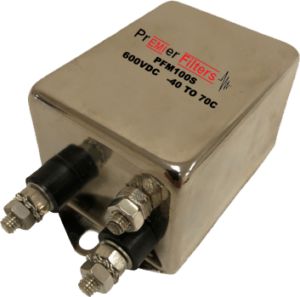
Frequently Asked Questions
Find answers and general information about EMI filters.

Find answers and general information about EMI filters.
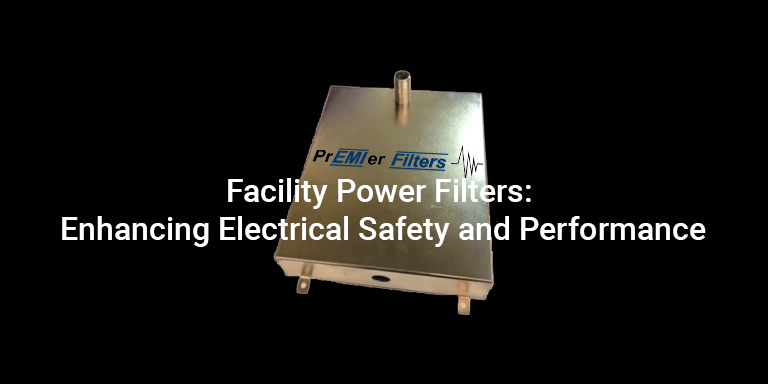 Facility Power Filters: Enhancing Electrical Safety and Performance June 23, 2023 - Facility EMI (Electromagnetic Interference) filters have emerged as crucial components in modern electrical systems. These filters are specifically designed to mitigate the harmful effects of electromagnetic interference, ensuring the safe and efficient operation of various equipment and systems within a facility. In this article, we will explore the fascinating world of Facility EMI Filters, their …
Facility Power Filters: Enhancing Electrical Safety and Performance June 23, 2023 - Facility EMI (Electromagnetic Interference) filters have emerged as crucial components in modern electrical systems. These filters are specifically designed to mitigate the harmful effects of electromagnetic interference, ensuring the safe and efficient operation of various equipment and systems within a facility. In this article, we will explore the fascinating world of Facility EMI Filters, their … Continue reading "Facility Power Filters: Enhancing Electrical Safety and Performance"
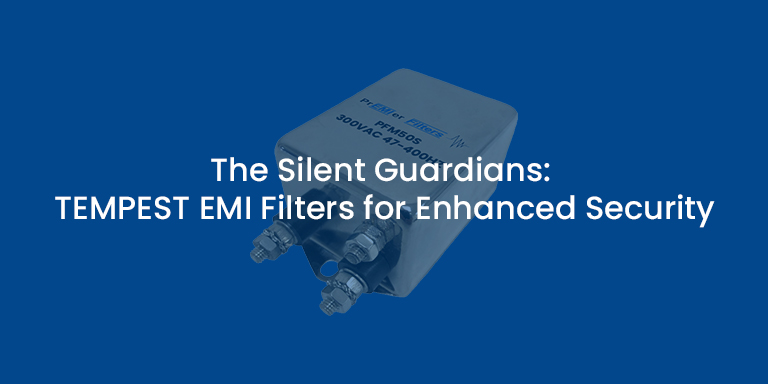 The Silent Guardians: TEMPEST EMI Filters for Enhanced Security May 29, 2023 - In today’s high-tech world, the security of sensitive information is of paramount importance. One often-overlooked aspect of information security is the protection against compromising emanations or TEMPEST. TEMPEST refers to the unintentional leakage of electromagnetic signals from electronic devices that can be intercepted and decoded by malicious actors. TEMPEST EMI filters play a crucial role …
The Silent Guardians: TEMPEST EMI Filters for Enhanced Security May 29, 2023 - In today’s high-tech world, the security of sensitive information is of paramount importance. One often-overlooked aspect of information security is the protection against compromising emanations or TEMPEST. TEMPEST refers to the unintentional leakage of electromagnetic signals from electronic devices that can be intercepted and decoded by malicious actors. TEMPEST EMI filters play a crucial role … Continue reading "The Silent Guardians: TEMPEST EMI Filters for Enhanced Security"
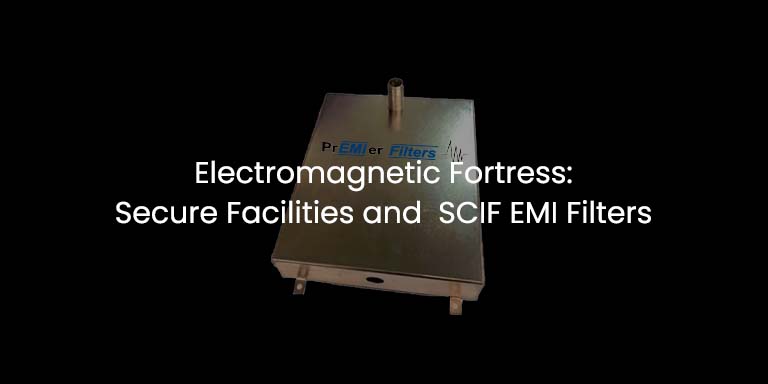 Electromagnetic Fortress: Secure Facilities and SCIF EMI Filters April 28, 2023 - Electromagnetic interference (EMI) can pose significant threats to the operation and security of sensitive electronic equipment in secure facilities. These facilities, which include data centers, military installations, and research laboratories, house critical infrastructure and valuable information that need to be protected from external and internal EMI sources. EMI filters play a vital role in maintaining …
Electromagnetic Fortress: Secure Facilities and SCIF EMI Filters April 28, 2023 - Electromagnetic interference (EMI) can pose significant threats to the operation and security of sensitive electronic equipment in secure facilities. These facilities, which include data centers, military installations, and research laboratories, house critical infrastructure and valuable information that need to be protected from external and internal EMI sources. EMI filters play a vital role in maintaining … Continue reading "Electromagnetic Fortress: Secure Facilities and SCIF EMI Filters"
 Ways to Reduce Power-Supply Noise August 5, 2021 - Noise is undesired harmonic energy resulting from fast changes in voltage and current in electronic equipment and circuits. In a power supply, this is primarily caused by the high frequency power conversion switching circuits (e.g. PWM). This noise can conduct onto and radiate from PCB traces and wires and cables. Several common practices can be …
Ways to Reduce Power-Supply Noise August 5, 2021 - Noise is undesired harmonic energy resulting from fast changes in voltage and current in electronic equipment and circuits. In a power supply, this is primarily caused by the high frequency power conversion switching circuits (e.g. PWM). This noise can conduct onto and radiate from PCB traces and wires and cables. Several common practices can be … 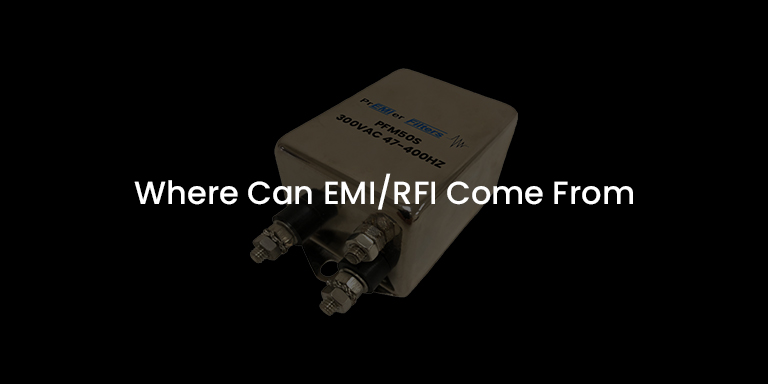 Where Can EMI/RFI Come From July 15, 2021 - Electromagnetic Interference (EMI) and Radio Frequency Interference (RFI) are two sides of the same phenomenon in which electronic devices produce and are affected by electromagnetic radiation. The terms RFI and EMI are frequently used interchangeably as radio waves are merely a subset of the electromagnetic spectrum. EMI/RFI are becoming more of a problem in today’s …
Where Can EMI/RFI Come From July 15, 2021 - Electromagnetic Interference (EMI) and Radio Frequency Interference (RFI) are two sides of the same phenomenon in which electronic devices produce and are affected by electromagnetic radiation. The terms RFI and EMI are frequently used interchangeably as radio waves are merely a subset of the electromagnetic spectrum. EMI/RFI are becoming more of a problem in today’s …  What is Low-Pass Filter June 9, 2021 - A filter that passes frequencies below a certain frequency and blocks signals above this frequency is known as a low-pass filter. The point where this occurs is called the cut-off frequency and is typically the point where the frequency response drops -3dB from the passband. Ideally, the frequency response drops at the cut-off frequency, but …
What is Low-Pass Filter June 9, 2021 - A filter that passes frequencies below a certain frequency and blocks signals above this frequency is known as a low-pass filter. The point where this occurs is called the cut-off frequency and is typically the point where the frequency response drops -3dB from the passband. Ideally, the frequency response drops at the cut-off frequency, but … 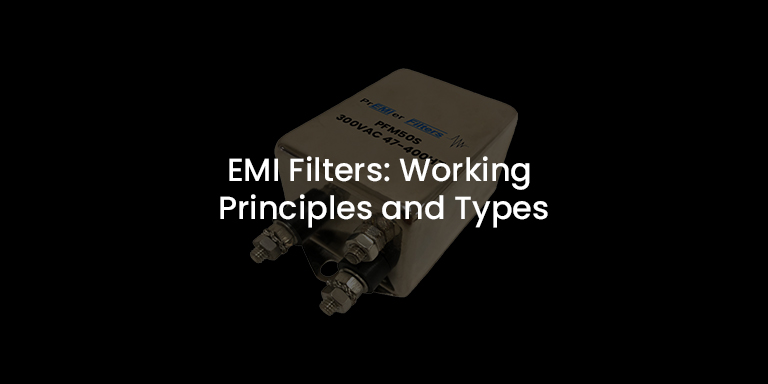 EMI Filters: Working Principles and Types May 24, 2021 - The abbreviation EMI means Electromagnetic Interference which is a disturbance caused to one electrical device by another electrical device. This happens either via direct or indirect contact. Direct contact is called conducted EMI and indirect or non-contact induction is called radiated EMI. An EMI filter is a device that is used as a protection shield …
EMI Filters: Working Principles and Types May 24, 2021 - The abbreviation EMI means Electromagnetic Interference which is a disturbance caused to one electrical device by another electrical device. This happens either via direct or indirect contact. Direct contact is called conducted EMI and indirect or non-contact induction is called radiated EMI. An EMI filter is a device that is used as a protection shield … Continue reading "EMI Filters: Working Principles and Types"
 What is EMI Shielding and Why is it Important for Your Design? May 3, 2021 - An EMI shield is a metal housing or structure that blocks electromagnetic fields from radiating and coupling into other circuits and systems. EMI shields protect electrical/electronic devices from external radiation that can interfere with sensitive circuits and cause operation failures, loss of data and system malfunctions. EMI shielding can come in many forms and metal …
What is EMI Shielding and Why is it Important for Your Design? May 3, 2021 - An EMI shield is a metal housing or structure that blocks electromagnetic fields from radiating and coupling into other circuits and systems. EMI shields protect electrical/electronic devices from external radiation that can interfere with sensitive circuits and cause operation failures, loss of data and system malfunctions. EMI shielding can come in many forms and metal … Continue reading "What is EMI Shielding and Why is it Important for Your Design?"
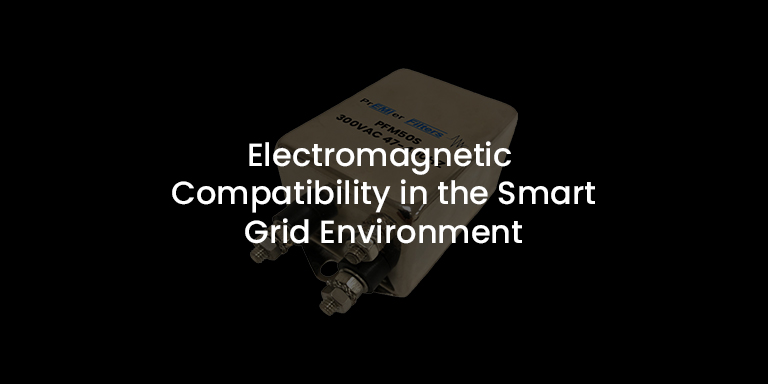 Electromagnetic Compatibility in the Smart Grid Environment March 25, 2021 - For continuous reliable real-time operation in areas where Smart Grid equipment will operate, one must consider the surrounding EMC environment. The components and devices of the Smart Grid system are subjected to a wide range of noise sources that can disrupt all electronic systems, including the smart grid systems. These noise sources can be conducted …
Electromagnetic Compatibility in the Smart Grid Environment March 25, 2021 - For continuous reliable real-time operation in areas where Smart Grid equipment will operate, one must consider the surrounding EMC environment. The components and devices of the Smart Grid system are subjected to a wide range of noise sources that can disrupt all electronic systems, including the smart grid systems. These noise sources can be conducted … Continue reading "Electromagnetic Compatibility in the Smart Grid Environment"
 PCB Design Guidelines for EMI/EMC March 8, 2021 - In this blog post, we present some general PCB (Printed Circuit Board) design rules. Although, PCB design can have the greatest impact on radiated noise, it also helps to control coupling of noise to the power cord and reduces common-mode coupling of noise to the ground or chassis. The following lists some basic considerations in …
PCB Design Guidelines for EMI/EMC March 8, 2021 - In this blog post, we present some general PCB (Printed Circuit Board) design rules. Although, PCB design can have the greatest impact on radiated noise, it also helps to control coupling of noise to the power cord and reduces common-mode coupling of noise to the ground or chassis. The following lists some basic considerations in … 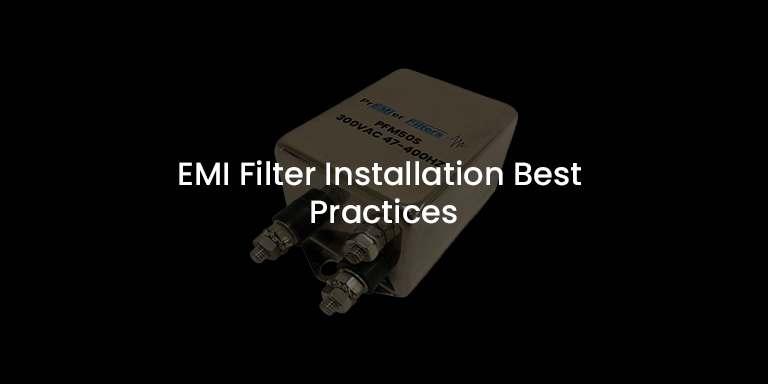 EMI Filter Installation Best Practices February 26, 2021 - EMI (Electromagnetic Interference) filters are a necessary component for most types of systems or equipment as it enables proper operation without interference to or from other systems. A key parameter to maintaining EMI filter performance is proper installation. Grounding/bonding, wiring, and mounting each play an important role in achieving maximum filter effectiveness. Grounding/Bonding EMI filters …
EMI Filter Installation Best Practices February 26, 2021 - EMI (Electromagnetic Interference) filters are a necessary component for most types of systems or equipment as it enables proper operation without interference to or from other systems. A key parameter to maintaining EMI filter performance is proper installation. Grounding/bonding, wiring, and mounting each play an important role in achieving maximum filter effectiveness. Grounding/Bonding EMI filters …  Process for Selecting an EMI Filter December 3, 2020 - Modern-day electrical and electronic devices utilize HF (high-frequency) switching circuits that generate HF harmonics that can propagate via cables or air. This high-frequency noise is known as EMI (electromagnetic interference) which can cause disturbance or malfunction to nearby equipment and electronic systems. In reducing EMI that propagates via cables, EMI filters can be an effective …
Process for Selecting an EMI Filter December 3, 2020 - Modern-day electrical and electronic devices utilize HF (high-frequency) switching circuits that generate HF harmonics that can propagate via cables or air. This high-frequency noise is known as EMI (electromagnetic interference) which can cause disturbance or malfunction to nearby equipment and electronic systems. In reducing EMI that propagates via cables, EMI filters can be an effective … 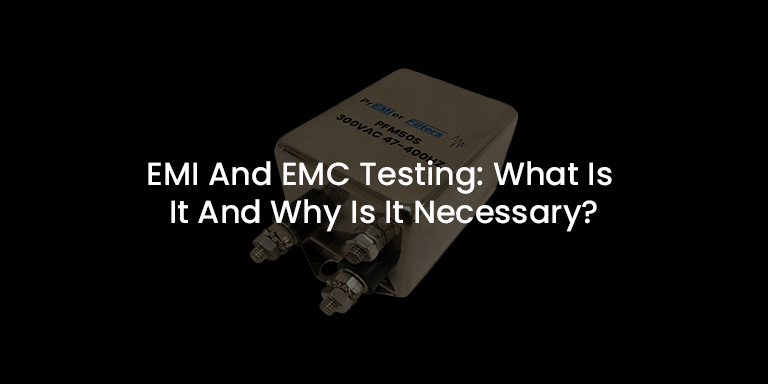 EMI And EMC Testing: What Is It And Why Is It Necessary? October 20, 2020 - EMI and EMC EMI (Electromagnetic Interference) can disrupt the operation of an electronic device that is placed close to the electromagnetic energy of an external electrical source (natural or man-made). Disruption may cause the failure of the device, or the device may not be able to function properly. EMI sources can be natural or …
EMI And EMC Testing: What Is It And Why Is It Necessary? October 20, 2020 - EMI and EMC EMI (Electromagnetic Interference) can disrupt the operation of an electronic device that is placed close to the electromagnetic energy of an external electrical source (natural or man-made). Disruption may cause the failure of the device, or the device may not be able to function properly. EMI sources can be natural or … Continue reading "EMI And EMC Testing: What Is It And Why Is It Necessary?"
 Comparison of Active and Passive EMI Filters September 17, 2020 - When a product is unable to pass EMC certification due to some mysterious EMI source, the manufacturer will probably start redesigning the product by rearranging the components. However, there may be more ways to suppress specific sources of EMI. The manufacturer can use a variety of EMI filters to suppress EMI in different frequency ranges. …
Comparison of Active and Passive EMI Filters September 17, 2020 - When a product is unable to pass EMC certification due to some mysterious EMI source, the manufacturer will probably start redesigning the product by rearranging the components. However, there may be more ways to suppress specific sources of EMI. The manufacturer can use a variety of EMI filters to suppress EMI in different frequency ranges. … Continue reading "Comparison of Active and Passive EMI Filters"
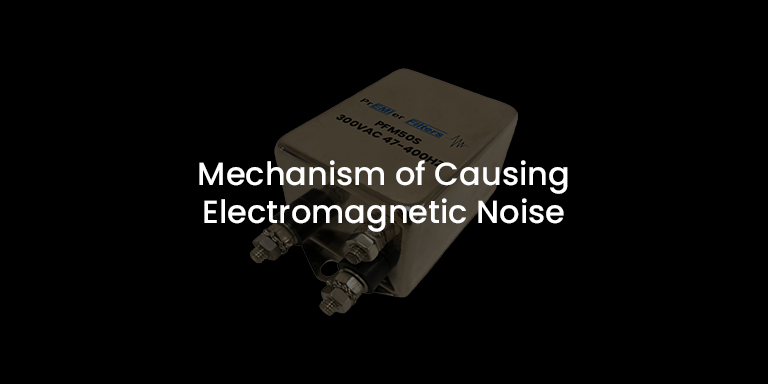 Mechanism of Causing Electromagnetic Noise September 1, 2020 - Electromagnetic Interference (popularly known as EMI) is an electromagnetic/electrical disturbance that causes the malfunctioning or degradation of electrical equipment. It can not only lead to the loss of transmitted data, but it can also damage the equipment completely. Despite all the disruptions caused due to EMI, it is common in the modern environment. EMI occurs …
Mechanism of Causing Electromagnetic Noise September 1, 2020 - Electromagnetic Interference (popularly known as EMI) is an electromagnetic/electrical disturbance that causes the malfunctioning or degradation of electrical equipment. It can not only lead to the loss of transmitted data, but it can also damage the equipment completely. Despite all the disruptions caused due to EMI, it is common in the modern environment. EMI occurs … Continue reading "Mechanism of Causing Electromagnetic Noise"
 EMI Filtering for High-Reliability Applications August 3, 2020 - Signal transmission and integrity can be disrupted by electrical noise, or Electromagnetic Interference (EMI). This noise can be caused by natural and man-made sources. The primary area of concern is man-made noise created by high frequency switching circuits used to transform power and generate digital or logic and clock signals. An invaluable tool to reduce …
EMI Filtering for High-Reliability Applications August 3, 2020 - Signal transmission and integrity can be disrupted by electrical noise, or Electromagnetic Interference (EMI). This noise can be caused by natural and man-made sources. The primary area of concern is man-made noise created by high frequency switching circuits used to transform power and generate digital or logic and clock signals. An invaluable tool to reduce … Continue reading "EMI Filtering for High-Reliability Applications"
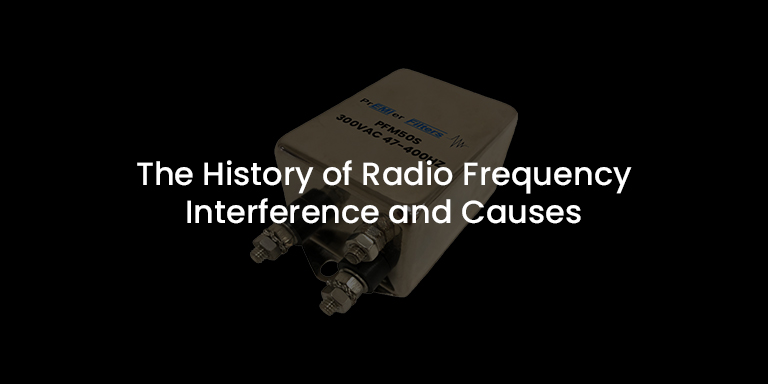 The History of Radio Frequency Interference and Causes July 23, 2020 - Radio frequency interference, commonly known as RFI, is a term that harkens back to the onset of telegraph lines and radio towers. Today, RFI is encompassed by the much broader term of EMI (Electromagnetic Interference). Since the invention of the transistor, electronic devices have incorporated high frequency switching techniques to transform power and enter in …
The History of Radio Frequency Interference and Causes July 23, 2020 - Radio frequency interference, commonly known as RFI, is a term that harkens back to the onset of telegraph lines and radio towers. Today, RFI is encompassed by the much broader term of EMI (Electromagnetic Interference). Since the invention of the transistor, electronic devices have incorporated high frequency switching techniques to transform power and enter in … Continue reading "The History of Radio Frequency Interference and Causes"
 What is RF Interference? July 1, 2020 - RF Interference (RFI) or EMI (Electromagnetic Interference) is an invisible phenomenom that is all around us. In general, it is created by sharp changes in circuit voltage and current (di/dt, dv/dt). Lines across an older TV when you operate a vacuum cleaner, a blown LED light when the AC turns on, or an AM radio …
What is RF Interference? July 1, 2020 - RF Interference (RFI) or EMI (Electromagnetic Interference) is an invisible phenomenom that is all around us. In general, it is created by sharp changes in circuit voltage and current (di/dt, dv/dt). Lines across an older TV when you operate a vacuum cleaner, a blown LED light when the AC turns on, or an AM radio … 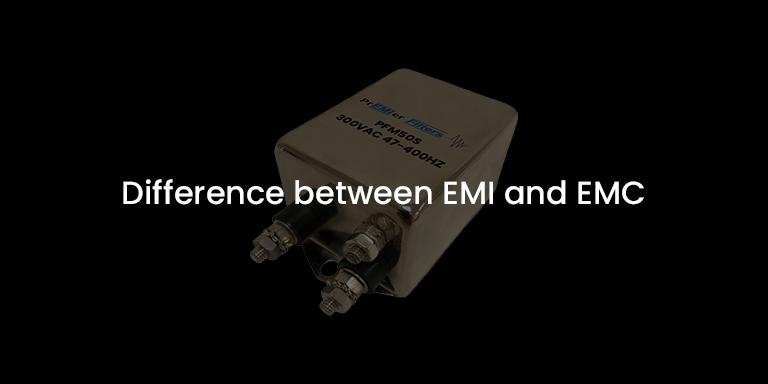 Difference between EMI and EMC June 22, 2020 - Electromagnetic interference (EMI) and Electromagnetic Compatibility (EMC) represent two sides of the same coin. EMI is emitted, transmitted, conducted or radiated noise from electronic equipment and systems, while EMC is the ability of electronic equipment and systems to function or operate, without upset or failure, in the presence of EMI. All electronic devices or equipment …
Difference between EMI and EMC June 22, 2020 - Electromagnetic interference (EMI) and Electromagnetic Compatibility (EMC) represent two sides of the same coin. EMI is emitted, transmitted, conducted or radiated noise from electronic equipment and systems, while EMC is the ability of electronic equipment and systems to function or operate, without upset or failure, in the presence of EMI. All electronic devices or equipment …  Reasons for Requiring EMI Suppression Filters May 11, 2020 - EMI Electromagnetic Interference (or EMI) is said to occur when an electronic device does not receive the intended current due to the interruption of unwanted electric currents. Such disruptive currents (also termed as Noise or Electromagnetic Noise) generate from any external source or any components of the device. Electromagnetic interference can be produced from …
Reasons for Requiring EMI Suppression Filters May 11, 2020 - EMI Electromagnetic Interference (or EMI) is said to occur when an electronic device does not receive the intended current due to the interruption of unwanted electric currents. Such disruptive currents (also termed as Noise or Electromagnetic Noise) generate from any external source or any components of the device. Electromagnetic interference can be produced from … Continue reading "Reasons for Requiring EMI Suppression Filters"
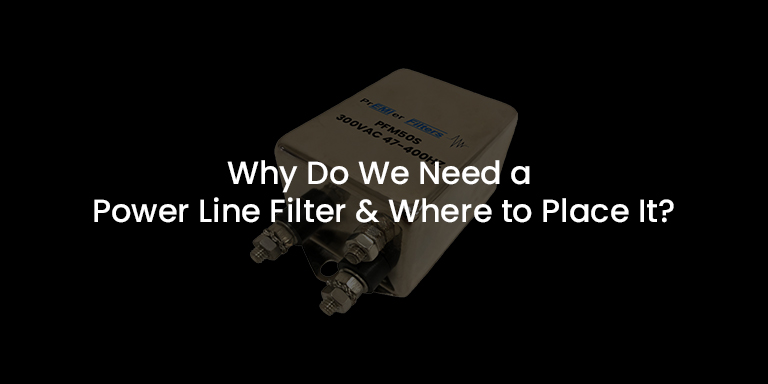 Why Do We Need a Power Line Filter and Where to Place It? April 20, 2020 - EMI Power Line Filters are required due to the use of high frequency switching techniques used in today’s power conversion circuits. Harmonic noise created from fast changes in voltage and current from Switch Mode Power Supplies (SMPS), inverters, rectifiers, etc. require EMI filters to meet the conducted emission requirements as set forth in the various …
Why Do We Need a Power Line Filter and Where to Place It? April 20, 2020 - EMI Power Line Filters are required due to the use of high frequency switching techniques used in today’s power conversion circuits. Harmonic noise created from fast changes in voltage and current from Switch Mode Power Supplies (SMPS), inverters, rectifiers, etc. require EMI filters to meet the conducted emission requirements as set forth in the various … Continue reading "Why Do We Need a Power Line Filter and Where to Place It?"
 DELTA and WYE 3-Phase EMI Power Line Filters April 3, 2020 - In general, Industrial applications (induction heaters, inverters, machinery, etc.) demand high power and therefore, are generally designed for three phase power. Three phase power splits the total power into various phases, thus optimizing the supply generation and distribution as well as the equipment design. A three phase system consist of three current-carrying conductors, or phases, …
DELTA and WYE 3-Phase EMI Power Line Filters April 3, 2020 - In general, Industrial applications (induction heaters, inverters, machinery, etc.) demand high power and therefore, are generally designed for three phase power. Three phase power splits the total power into various phases, thus optimizing the supply generation and distribution as well as the equipment design. A three phase system consist of three current-carrying conductors, or phases, … Continue reading "DELTA and WYE 3-Phase EMI Power Line Filters"